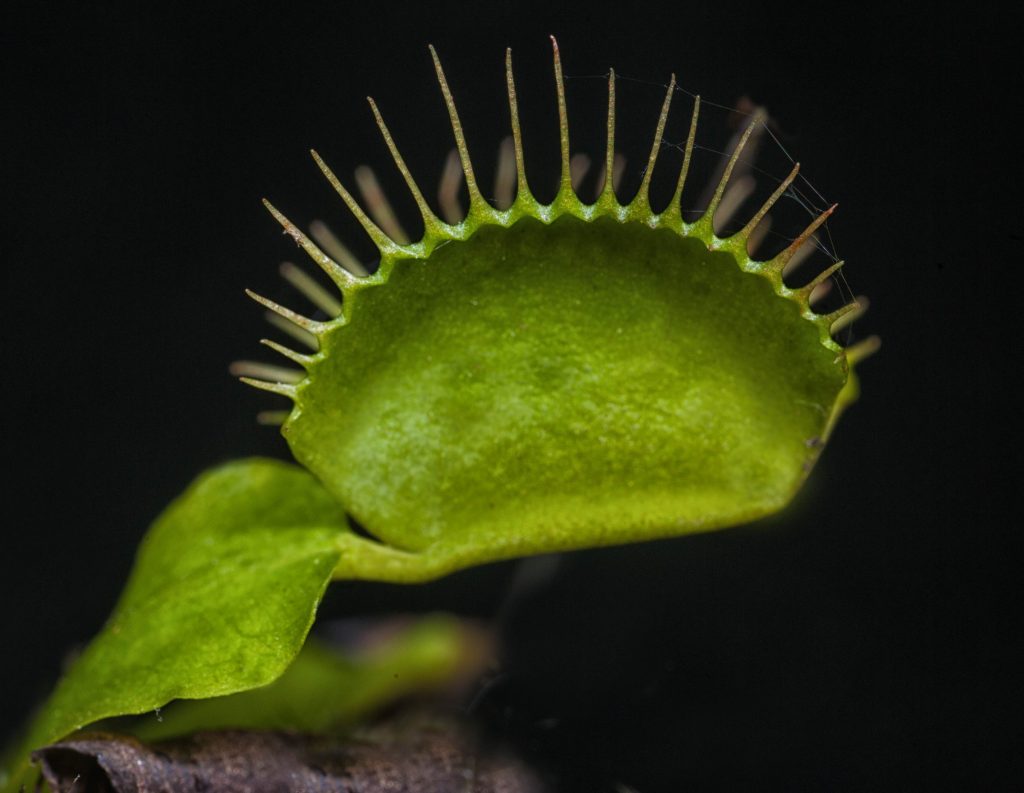A reunion with an old friend that already decorated the tables at the first Science Ball in 2015: the Venus flytrap.
From the outside it looks harmless. Delicate, almost innocent. Like a leaf with braces, an alien smile in green. But beware if someone is careless. Then it clicks. Then it snaps shut. And while you are still amazed, it has already snapped shut – bang, game over. The Venus flytrap, botanically correct Dionaea muscipula, is a plant and a hunter, an ornament and a killer at the same time. And, as luck would have it, this year it is (again) a table decoration at the Vienna Science Ball.
Surprise: This plant counts. No, it does not add, but it can register and store touches. And at a level that is quite remarkable for a life without a brain. On the inside of its leaf flaps there are fine hairs, so-called trigger hairs. If something touches one of these hairs, nothing happens at first. It could just be a raindrop that happens to trickle past. But on the second contact – whether on the same hair or a neighboring hair – the trap snaps shut. Bang, within a fraction of a second.
The Venus flytrap could represent evolution in its most creative form: saving energy until it’s really worth it. Because energy is scarce if you live in nutrient-poor swamp soil like Dionaea. Its home, the subtropical swamps of the two American Carolinas, offers little nitrogen – so it has simply absorbed the nitrogen. From flies. From beetles. Sometimes even from small spiders. But Dionaea wouldn’t be itself if it wasn’t picky. Closing is just the beginning. If the trapped object doesn’t move any further – no more wriggling, no chance of dinner – it opens again, almost with a plant-like shrug of the shoulders. However, if the victim is alive, the plant counts a few more times: five touches mean: “Yes, this snack is worth it.” Only then does digestion begin – a process that takes up to ten days. The question of how a creature without a nervous system stores information at all leads right into the depths of electrobiology. Every touch triggers a kind of electrical signal in the Venus flytrap, comparable to the action potentials in animal nerve cells. The stored information can be accessed for around 20 seconds – enough time to decide on the next step.
The Venus flytraps on the tables of the Vienna Science Ball are purely spectators. No one needs to fear that they themselves will suddenly become a midnight snack. But the message is clear: respect. For nature, for its fragility and at the same time for its incredible adaptability. Anyone who takes the time to quietly observe the Venus flytrap will learn a lesson in patience and precision. And who knows – perhaps this inconspicuous table decoration will become a metaphor for more. For the miracle in the little things. And the question of who is actually watching whom here.
